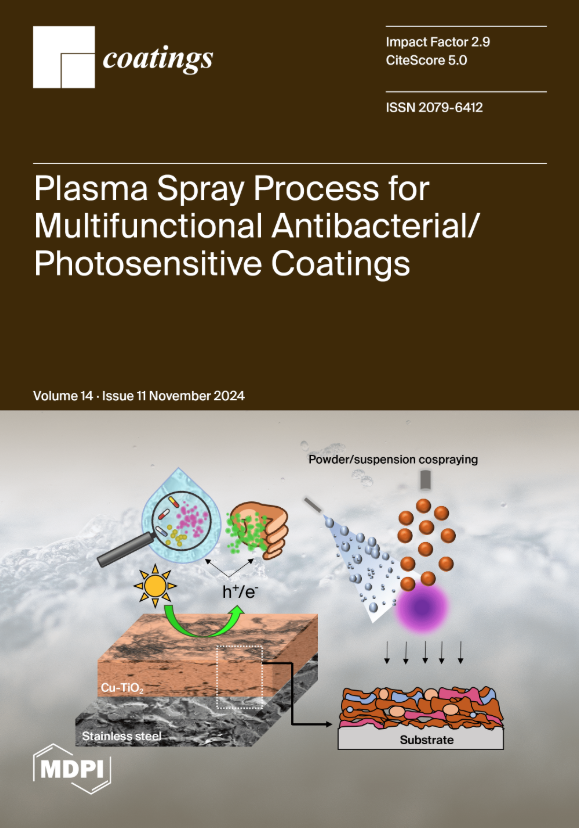利用疏水性和韧性微/纳米粒子制备坚固的超疏水涂层
IF 2.8
3区 材料科学
Q2 MATERIALS SCIENCE, COATINGS & FILMS
引用次数: 0
摘要
使用粘合剂和填料制备的超疏水纳米复合涂层具有易于制造和适合大规模应用等优点,但与其他类型的人工超疏水表面相比,较差的耐久性仍然限制了这些表面的实际应用。利用具有内在疏水性和强大机械性能的微米/纳米级颗粒制备涂层,应能显著提高耐久性。本文首先制备了具有微/纳米分层结构的粗糙疏水颗粒,然后利用制备的颗粒和额外的纳米颗粒制作了坚固的超疏水表面。最初制备的颗粒形成了涂层的粗糙框架,而额外的纳米颗粒则提供了不可避免的纳米级结构。为了验证涂层的耐久性,我们进行了一系列机械测试,结果表明含有 20 wt.% 纳米粒子的表面性能最佳,能经受 30 次胶带剥离测试、2.47 米砂纸摩擦测试(压力为 5 kPa)、200 克砂砾从 20 厘米高处掉落的冲击以及 2 小时的酸性浸泡。这些吸引人的材料可能会在涂料工业的自清洁、防结冰和防污应用中引起关注。本文章由计算机程序翻译,如有差异,请以英文原文为准。
Preparation of Robust Superhydrophobic Coatings Using Hydrophobic and Tough Micro/Nano Particles
Superhydrophobic nanocomposite coatings, prepared using adhesive and fillers, offer advantages including ease of fabrication and suitability for large-scale applications, but compared with other types of artificial superhydrophobic surfaces, poor durability still limits these surfaces from practical applications. The utilization of micro/nanoscale particles with both intrinsic hydrophobicity and robust mechanical properties to prepare coatings should significantly contribute to enhanced durability. Herein, rough and hydrophobic particles with micro/nano hierarchical structures were prepared at first, and robust superhydrophobic surfaces were fabricated using the prepared particles and additional nanoparticles. The initially prepared particles formed a rough framework of the coating, while additional nanoparticles provided inevitable nanoscale structures. A series of mechanical tests were carried out to validate the durability, and the surface with 20 wt.% NPs exhibited the best performance, withstanding 30 tape peeling tests, a 2.47 m sandpaper rubbing test (at a pressure of 5 kPa), the impact of 200 g of grit dropped from a height of 20 cm, and a 2 h acidic immersion. These appealing materials may attract attention for self-cleaning, anti-icing, and anti-fouling applications in the coatings industry.
求助全文
通过发布文献求助,成功后即可免费获取论文全文。
去求助
来源期刊

Coatings
Materials Science-Surfaces, Coatings and Films
CiteScore
5.00
自引率
11.80%
发文量
1657
审稿时长
1.4 months
期刊介绍:
Coatings is an international, peer-reviewed open access journal of coatings and surface engineering. It publishes reviews, research articles, communications and technical notes. Our aim is to encourage scientists to publish their experimental and theoretical results in as much detail as possible. There is no restriction on the length of the papers. Full experimental and/or methodical details must be provided. There are, in addition, unique features of this journal:
* manuscripts regarding research proposals and research ideas will be particularly welcomed
* electronic files or software regarding the full details of the calculation and experimental procedure - if unable to be published in a normal way - can be deposited as supplementary material
 求助内容:
求助内容: 应助结果提醒方式:
应助结果提醒方式:


